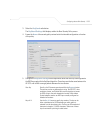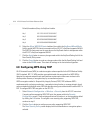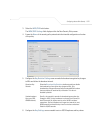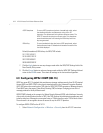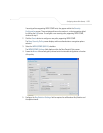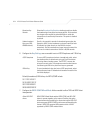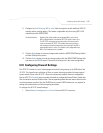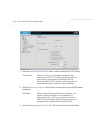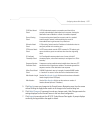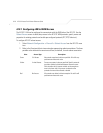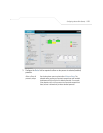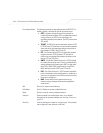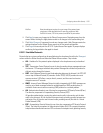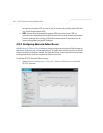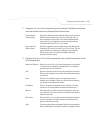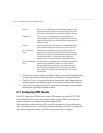
Configuring Access Point Security
6-27
5. Click Apply to save any changes to the Firewall screen. Navigating away from the screen
without clicking the Apply button results in all changes to the screens being lost.
6. Click Undo Changes (if necessary) to undo any changes made. Undo Changes reverts the
settings displayed on the Firewall screen to the last saved configuration.
7. Click Logout to securely exit the AP-5131 Symbol Access Point applet. A prompt displays
confirming the logout before the applet is closed.
SYN Flood Attack
Check
A SYN flood attack requests a connection and then fails to
promptly acknowledge a destination host's response, leaving the
destination host vulnerable to a flood of connection requests.
Source Routing
Check
A source routing attack specifies an exact route for a packet's
travel through a network, while exploiting the use of an
intermediate host to gain access to a private host.
Winnuke Attack
Check
A "Win-nuking" attack uses the IP address of a destination host to
send junk packets to its receiving port.
FTP Bounce Attack
Check
An FTP bounce attack uses the PORT command in FTP mode to gain
access to arbitrary ports on machines other than the originating
client.
IP Unaligned
Timestamp Check
An IP unaligned timestamp attack uses a frame with the IP
timestamp option, where the timestamp is not aligned on a 32-bit
boundary.
Sequence Number
Prediction Check
A sequence number prediction attack establishes a three-way TCP
connection with a forged source address. The attacker guesses the
sequence number of the destination host response.
Mime Flood Attack
Check
A MIME flood attack uses an improperly formatted MIME header
in "sendmail" to cause a buffer overflow on the destination host.
Max Header Length Use the Max Header Length field to set the maximum allowable
header length (at least 256 bytes).
Max Headers Use the Max Headers field to set the maximum number of
headers allowed (at least 12 headers).



